The formative years of a child’s life are a whirlwind of growth, development, and discovery, where every experience is a learning opportunity. The importance of early childhood development cannot be overstated, as it is during this time that the foundation for cognitive, emotional, and social skills is laid down. Secure, stimulating, and nurturing learning environments are vital in shaping the young minds leading our future. Among these, outdoor environments play an integral role, offering a canvas as vast as nature itself for children to learn, explore, and grow.
Incorporating natural materials into these spaces is not just a trend but a cornerstone in creating early childhood educational landscapes. These materials invite open-ended interaction, spontaneity, and sensory-rich experiences crucial for brain development. A well-designed play space, particularly outdoors, provides a unique setting where the environment teaches lessons that no indoor classroom can replicate. The textures of bark, the movement of leaves, and the infinite variety of natural elements stimulate a child’s innate curiosity.
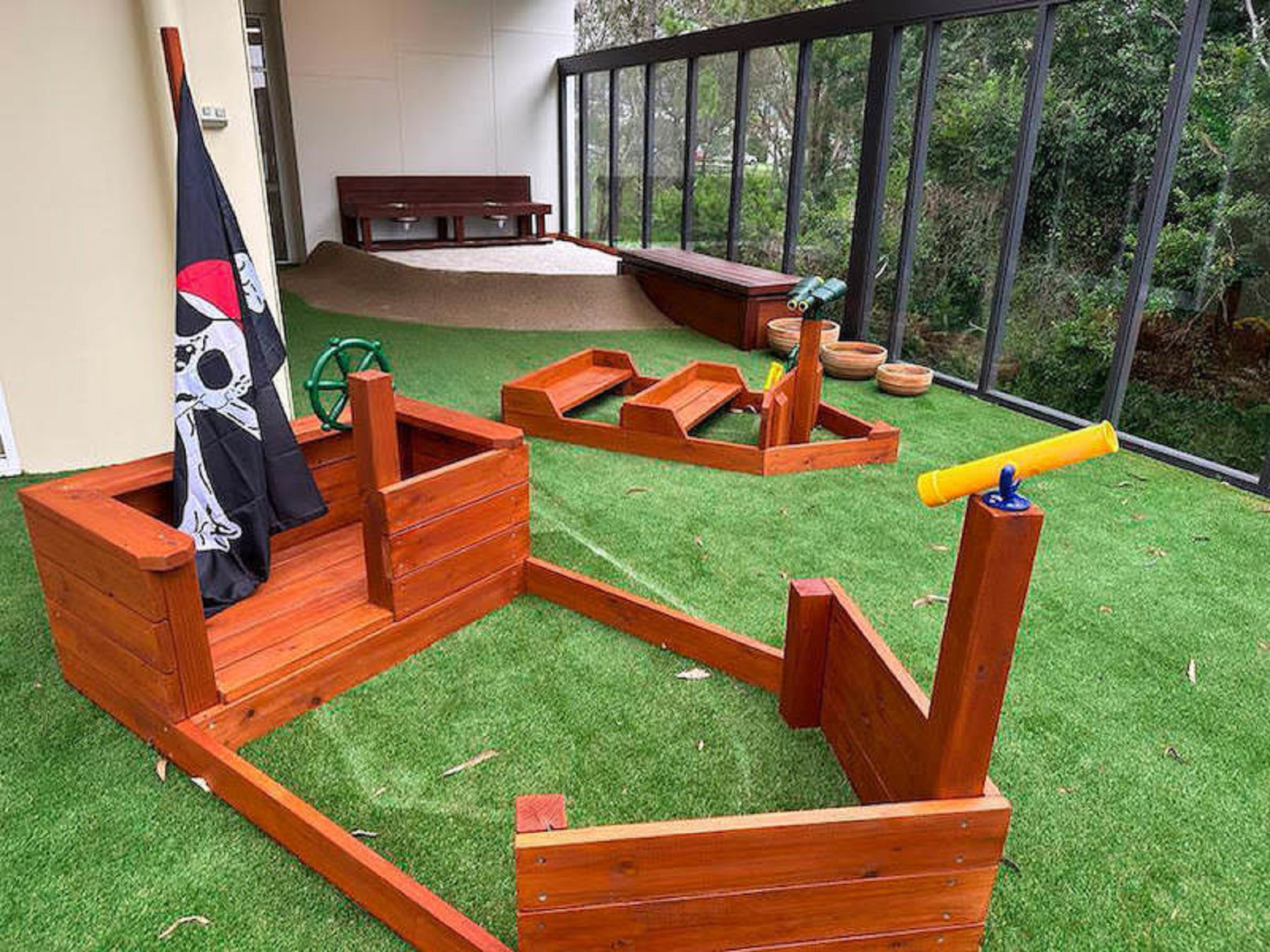
We will delve into the methodologies and philosophies behind creating outdoor environments that are safe, age-appropriate, and brimming with potential for discovery and learning. By marrying the concepts of nurture and nature, we aim to provide an overview of designing natural spaces for our youngest explorers, ensuring these environments are not just backdrops but active participants in the journey of early development.
The Essentials of Outdoor Play Space Design
Safety First
In designing learning environments for children, safety is the paramount concern that guides every decision. Fences and barriers create secure perimeters essential for providing a safe area where toddlers can explore the world without risking wandering off or encountering danger. These boundaries offer a head start in establishing a protected zone where freedom of movement is encouraged within a well-defined space.
Surfacing materials are also a critical aspect of safety in play environments. They cushion falls and prevent injuries, allowing children to engage in physical play with less risk. Rubber mats, wood chips, and sand are among the materials that can ensure a soft landing during active play.
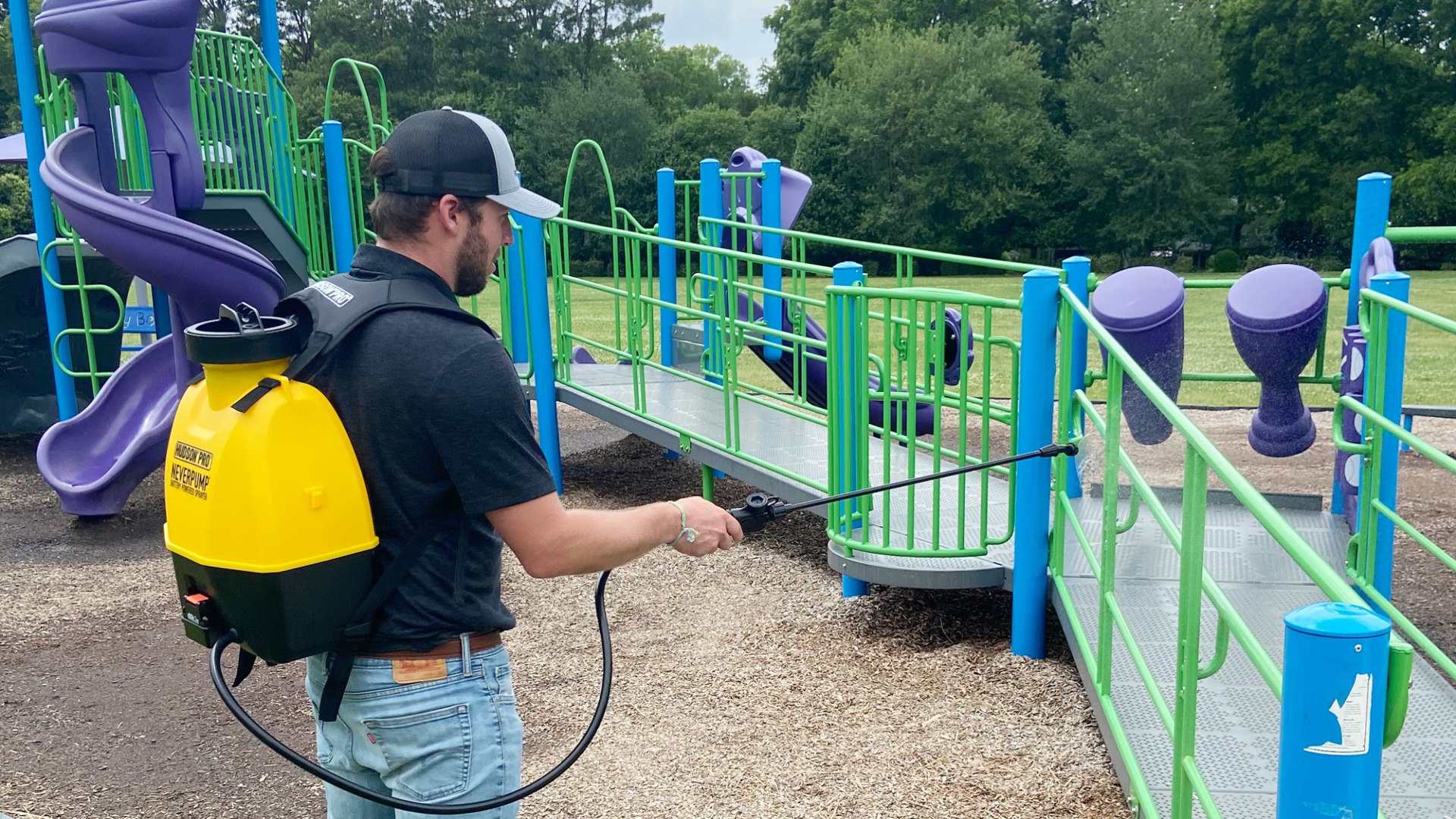
Lastly, using non-toxic and easily cleanable surfaces helps children get a head start in health and education. Surfaces that are free from harmful chemicals and can be regularly sanitized support a hygienic play space, which is essential for keeping young immune systems safe. This approach to safety ensures that learning environments are not only intellectually stimulating but also physically secure, giving children the opportunity to engage in open-ended play that is as safe as it is enriching.
Accessibility and Developmental Appropriateness
Creating an inclusive outdoor space that caters to infants and toddlers of varying developmental stages is a multifaceted challenge that requires a thoughtful approach. Each play structure must be carefully selected or designed for these young learners to match their physical capabilities and support their emerging developmental skills. These structures must be scalable to accommodate growing abilities, ensuring that as children develop, the environment continues to challenge and engage them.
For infants, the play spaces should include features that support their need to reach, grasp, and explore at ground level. Low platforms with gentle ramps and soft-textured mats can encourage movement and exploration. Responsive adults play a vital role in this phase, as they are the ones who can guide infants safely in their exploration and ensure the environment remains hazard-free.
As toddlers begin to move independently, their environment should grow with them. It’s crucial to have safe outdoor play structures that stimulate their burgeoning curiosity and motor skills. Climbing frames, slides, and crawl tunnels designed for small bodies can facilitate this growth, providing physical exertion and coordination opportunities. These structures should be nestled within a learning space, allowing free movement and letting toddlers test their limits in a controlled and secure setting.
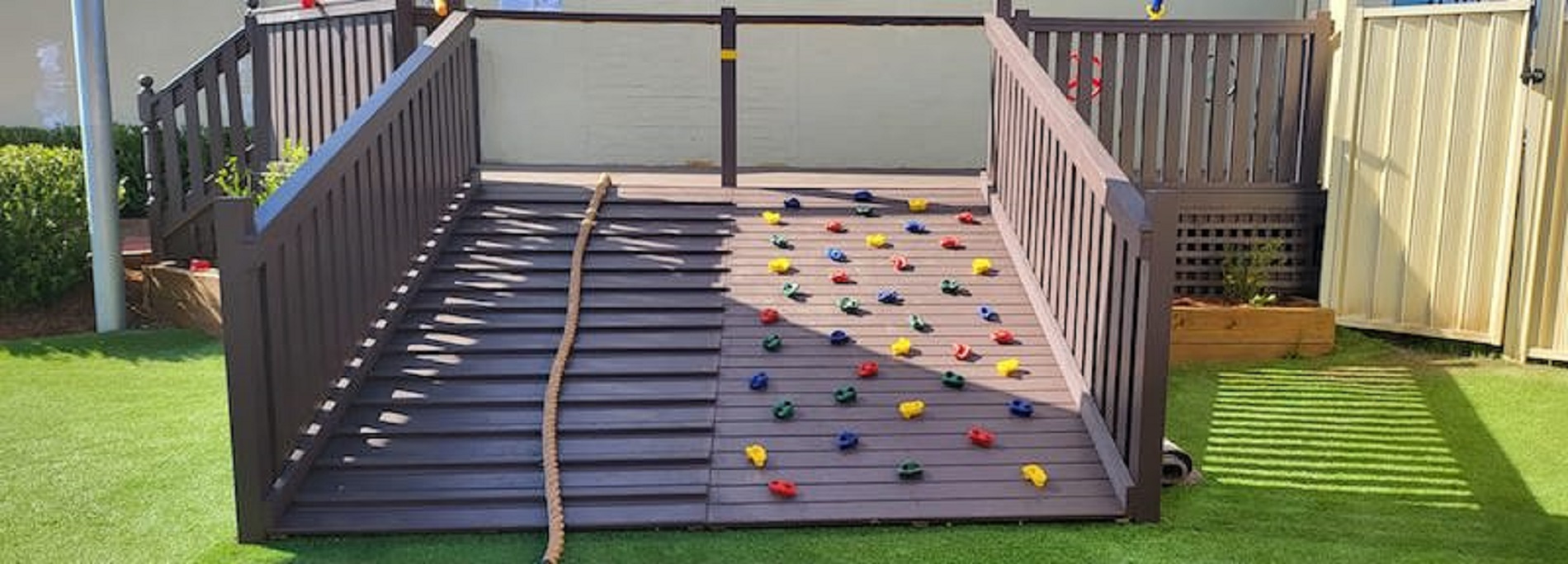
Catering to infants and toddlers simultaneously provides a gradient of complexities within the outdoor space. For instance, a water play area can entertain an infant with the simple joy of splashing. At the same time, older toddlers can engage in more complex play, like pouring and measuring, which are foundational to understanding math concepts. Similarly, sand areas can offer many activities, from tactile exploration for the youngest to imaginative and constructive play for older children.
With caring and responsive adults overseeing these rich outdoor play settings, children are safeguarded and encouraged to venture forth and test their growing abilities. These adults are key in adapting the outdoor environment to meet the needs of all children, ensuring that every child, regardless of ability, has access to developmentally appropriate play opportunities.
Sensory Exploration in Natural Play Areas
Tactile Experiences
Tactile experiences are fundamental in early childhood development, as they stimulate and enhance sensory processing abilities. Creating environments that include a variety of textures can significantly enrich the learning environments for young children. These experiences are designed to engage infants and older children alike with materials that are safe and appealing to touch, fostering exploration and interaction.
In early learning settings, integrating different textures can captivate children’s sense of touch, an essential part of sensory play. Items such as smooth river stones, rough tree bark, and soft grasses can be juxtaposed to provide a sensory feast for little hands. These tactile experiences help to anchor children in the physical world, offering them direct, hands-on ways to understand and categorize their surroundings.
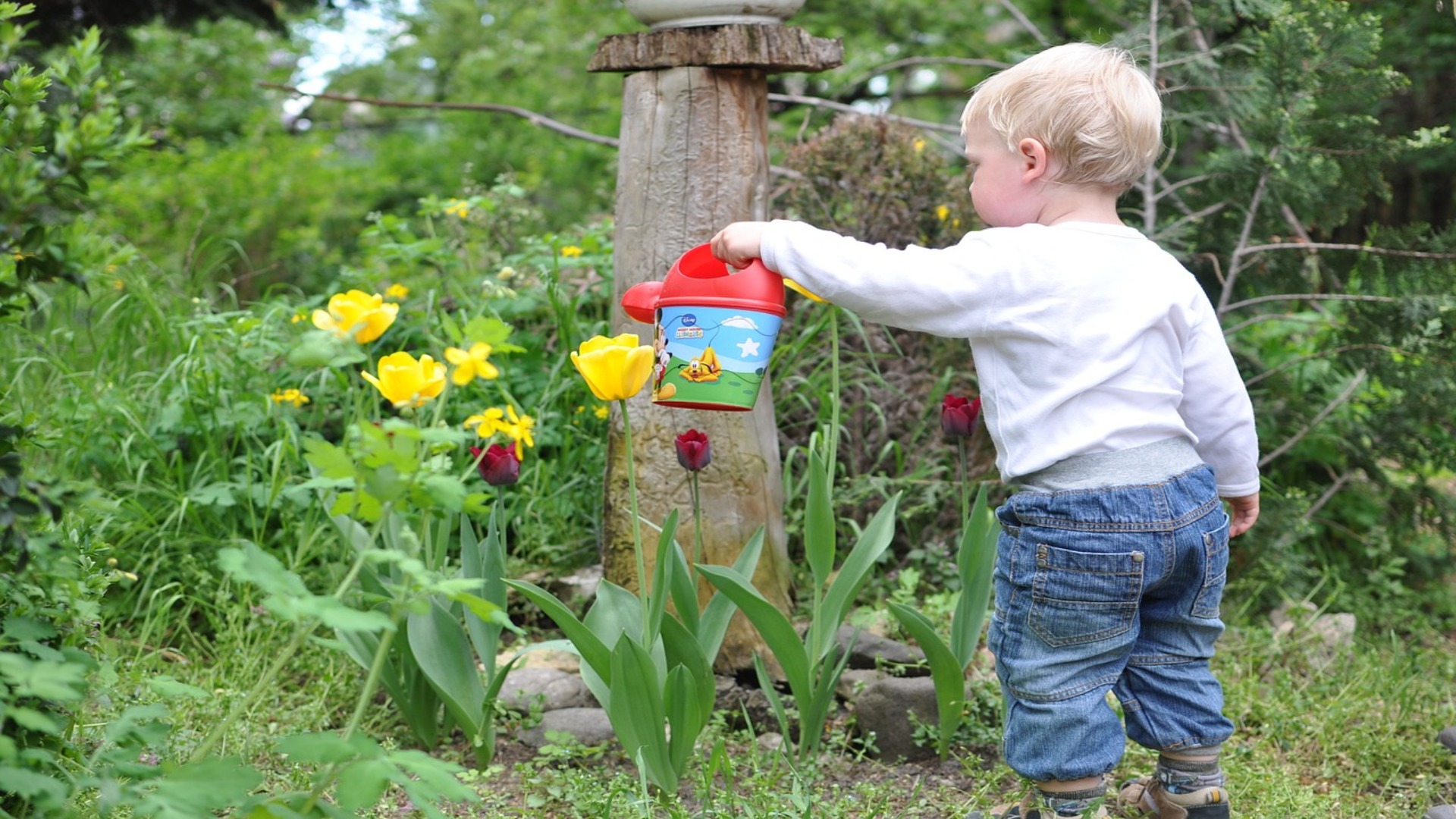
Through thoughtful design, early childhood learning environments can address multiple developmental domains. Sensory play with various textures encourages cognitive and physical development and supports emotional and social growth as children explore side by side and share their discoveries. Thus, a rich array of tactile experiences becomes a cornerstone of a well-rounded early learning experience.
Visual and Auditory Stimulation
In crafting environments for infants and young children, incorporating elements that provide visual and auditory stimulation is vital to creating a rich sensory landscape. Utilizing natural elements for visual interest beautifies the space and introduces nature’s intricate and varied patterns. Variegated leaves, colourful flower beds, and the dotted light through tree branches captivate children’s eyes and help them feel safe and connected to their surroundings.
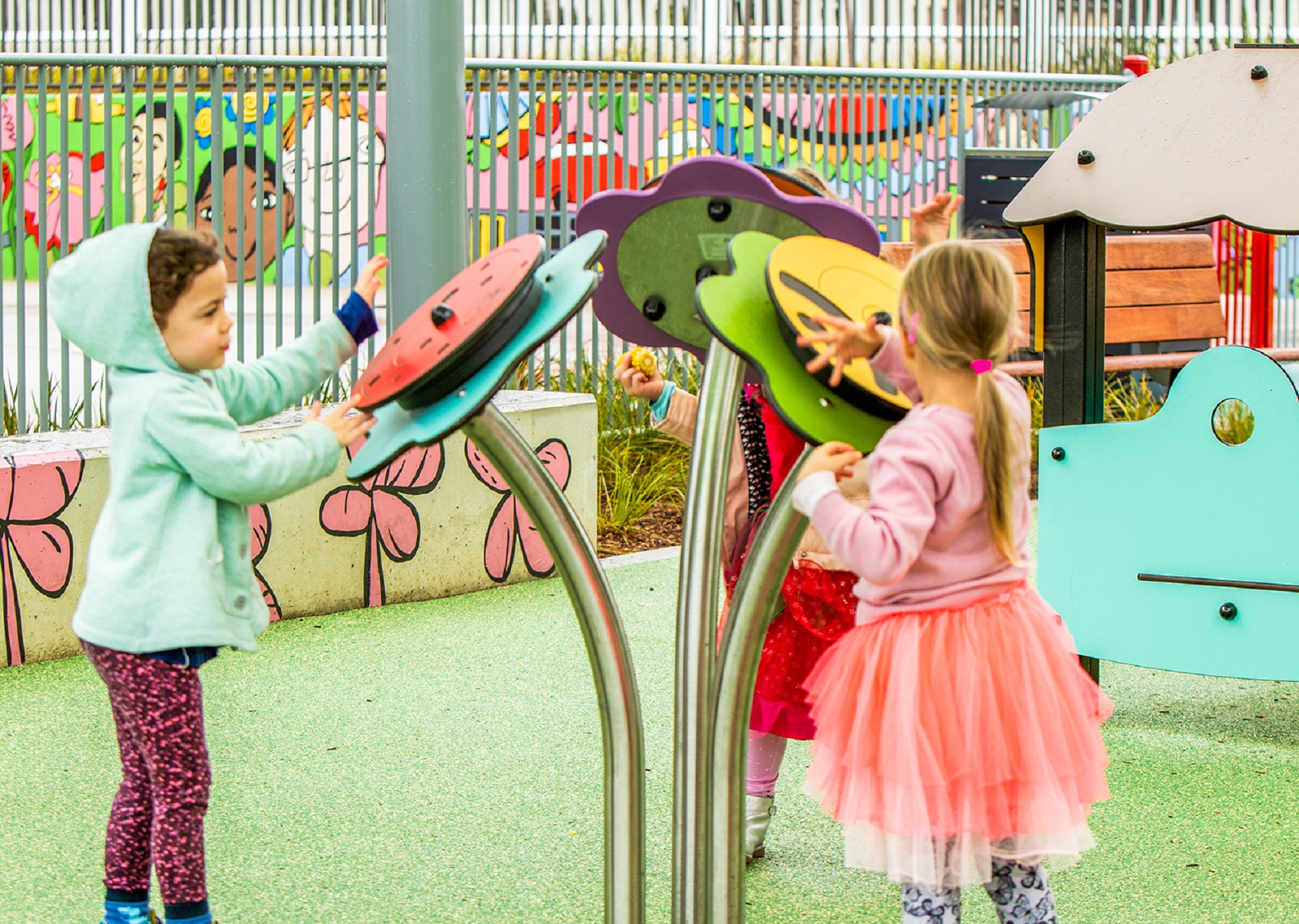
Incorporating different types of auditory stimuli helps children to develop their listening skills, which are crucial for language development. Subtle sounds like wind chimes or various calls encourage attentive listening and auditory discrimination. Moreover, these natural sounds can help create a serene atmosphere where children can explore and learn without overstimulation.
Motor Skill Development
In fostering motor skill development, play environments must be thoughtfully designed with structures and landscapes that stimulate physical activity and growth. Outdoor areas with hills, tunnels, and balance beams offer children many opportunities to climb, crawl, and balance, giving them a head start in developing their gross motor skills. These large movements coordinate and strengthen the major muscle groups, which are crucial for overall physical development.
To further enhance motor abilities, props and tools that encourage more precise movements can be incorporated to assist in the refinement of fine motor skills. Items like lacing beads, building blocks, and art materials like crayons and brushes invite children to practice coordination between their eyes and hands. These activities not only help children engage with the world around them in a tactile manner but also lay the groundwork for essential skills like writing and self-care.
Open-ended play objects like sand, water tables, and play dough are invaluable for motor development. They allow children to manipulate materials creatively, providing an enjoyable and educational sensory experience. By integrating these elements into early learning settings, children are free to explore and grow at their own pace, ensuring that their journey through childhood is as enriching as it is fun.
Nurturing Development Through Play
Cognitive Growth
Cognitive growth in young children can be significantly enriched through well-designed learning experiences that engage their natural curiosity. Sensory gardens, with their various plants, textures, and interactive features, are an essential part of this developmental puzzle. They encourage exploration and discovery, leading to an organic understanding of the world’s complexity.
These gardens can be arranged with elements that respond to a child’s actions, such as flowers that move when touched or water features that respond to hand movements. This interactivity is pivotal for teaching children about cause and effect, as they see the direct consequences of their actions in a tangible way. Watching a plant rustle when touched or hearing the sound of water being displaced fosters a basic grasp of physics and environmental science.
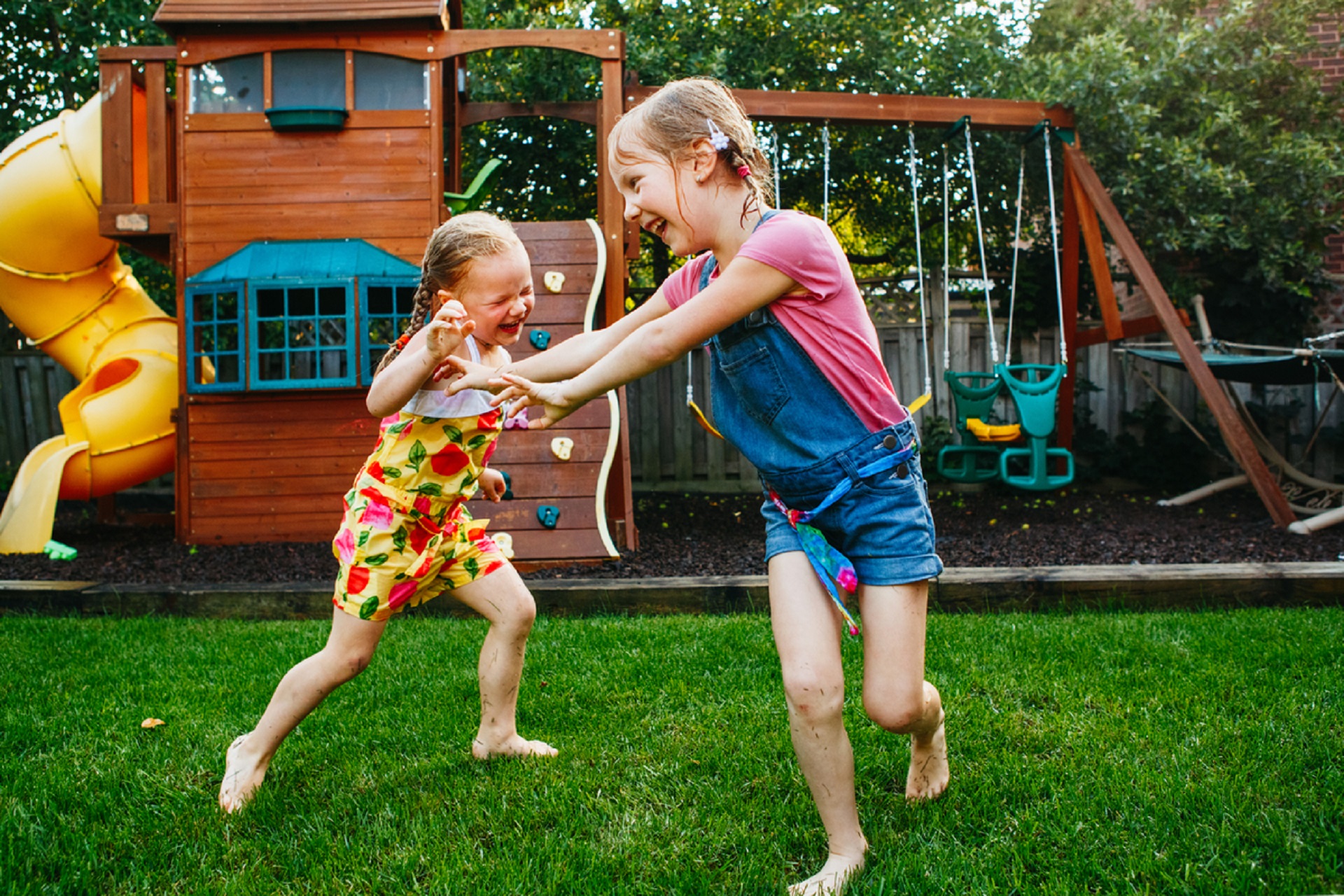
A well-thought-out sensory garden provides children with the freedom to manipulate their environment, leading to a deeper understanding and greater confidence in their ability to interact with the world around them.
Physical Milestones
Physical milestones during early childhood are pivotal markers of growth and development. To facilitate the achievement of these milestones, it is essential to provide equipment and dedicated spaces designed for crawling, standing, and walking. These areas should cater to the varying stages of a child’s physical development, allowing them to practice and hone their abilities safely.
For infants, soft mats and textured tunnels encourage the act of crawling, helping them to develop the strength and coordination needed for the following stages of mobility. Sturdy railings and low-height structures can support their tentative efforts. As children progress to pull themselves up, standing installations promote independence and instil confidence as children navigate their upright positions.
When it comes to walking, having open areas is crucial. Such spaces offer a safe and inviting environment for children to take their first steps and for older children to refine their walking and, eventually, running skills. Unstructured movement in these open areas is instrumental for children to test their limits, improve balance, and increase their spatial awareness.
These varied spaces should be interspersed with opportunities for rest and observation, allowing children to engage at their own pace. Children naturally progress through their physical milestones in a supportive and enriching environment.
Sensory Learning and Math Concepts
Integrating sensory learning with the introduction of math concepts meets the developmental needs of children holistically and engagingly, and water play areas are excellent for tactile experiences. They can also serve as powerful tools for mathematical learning. Through these mediums, children can explore volume, weight, and basic principles of physics, laying the groundwork for mathematical understanding.
As children scoop, pour, and measure, they enjoy the sensory feedback and experiment with early math concepts like full and empty, heavy and light, and more and less. Such activities are intuitively tailored to various developmental levels, allowing children to learn at their own pace and build confidence in their abilities.
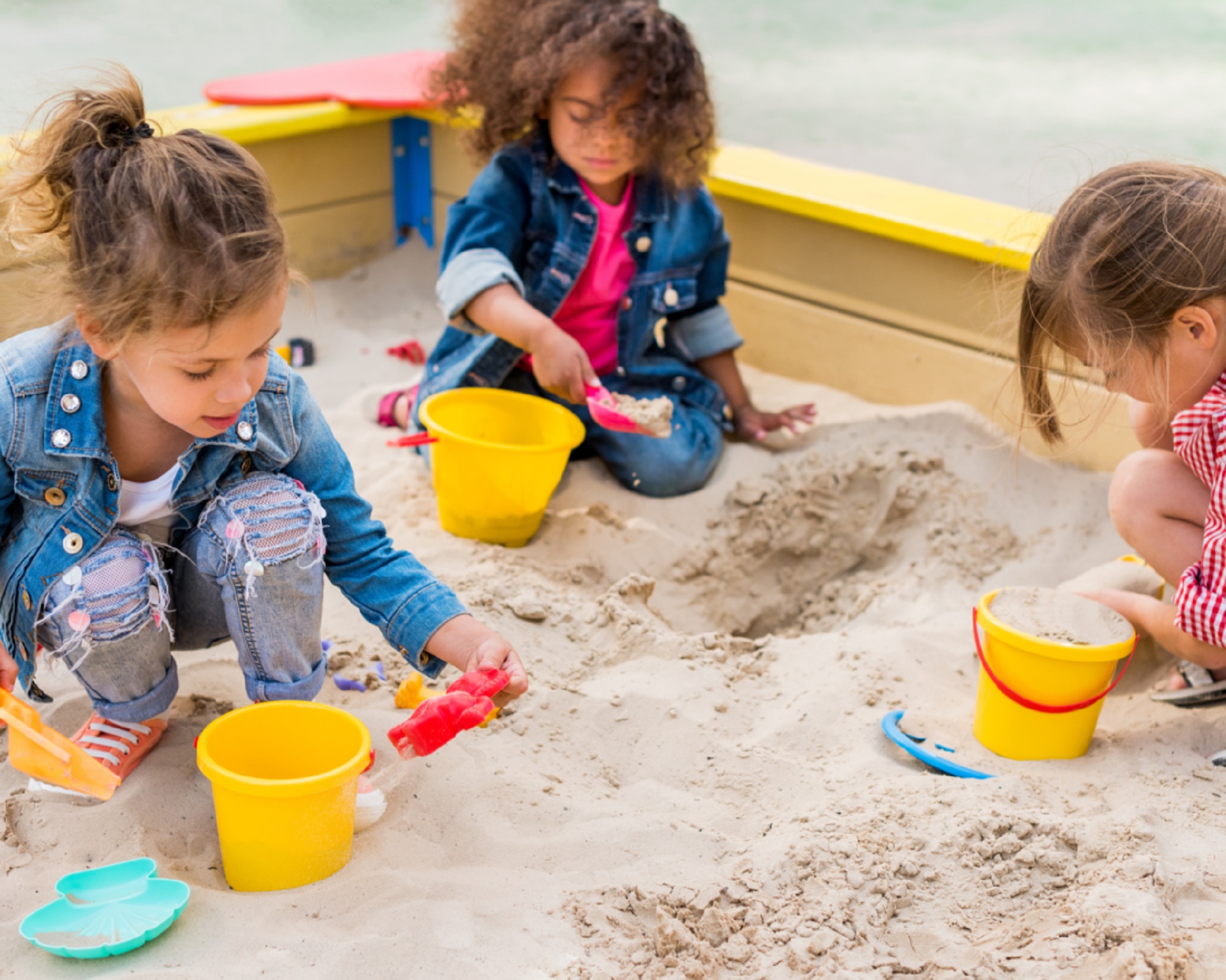
By thoughtfully combining sensory experiences with math-related props, children’s natural curiosity and enjoyment of play can lead to meaningful learning experiences. Careful consideration of each child’s stage of development ensures that these activities are both challenging and accessible, supporting their cognitive growth in an enjoyable and stress-free manner.
Social-Emotional Skills
Pretend play is a vital component of early childhood education, serving as a fertile ground for cultivating social-emotional skills. Children engaging in make-believe scenarios experiment with different social roles and perspectives, developing empathy and emotional awareness. Dress-up clothes, dolls, and miniature environments encourage children to enact various narratives, navigate relationships, and express emotions in a controlled and safe space.
These playful simulations offer opportunities for children to learn negotiation, cooperation, and conflict resolution. As they interact with peers, they build communication skills and understand the importance of taking turns and sharing, which are essential for healthy social development.
Tools that promote confidence and independence are also vital in nurturing social-emotional skills. Simple tasks like puzzles, lacing cards, and building sets require children to make decisions and solve problems independently. Completing these tasks provides a sense of achievement and self-reliance.
Items such as emotion cards or storybooks that explore feelings help children to identify and articulate their own emotions and those of others. These tools serve to validate their experiences and encourage children to express themselves in constructive ways.
Together, pretend play and individual activities provide a balanced approach to developing social-emotional skills, preparing children to interact confidently and compassionately with the world around them.
Facilitating Social Interaction
Independent and Cooperative Play
Fostering independent and cooperative play is essential in early childhood environments to support a child’s social and personal development. Designing spaces that cater to solitary play allows children to explore self-directed activities, which is critical for fostering independence and self-esteem. These areas might include cozy reading nooks, individual puzzle stations, or art corners where children can delve into activities at their own pace and according to their interests.
Parallel play, where children play alongside one another without direct interaction, is also a critical developmental stage. Providing ample space for children to engage in similar activities independently encourages respect for others’ work and an understanding of shared environments. Activity tables, sandbox areas, and blocks are excellent for this purpose, as they offer the resources for children to play nearby while still engaging their creative process.
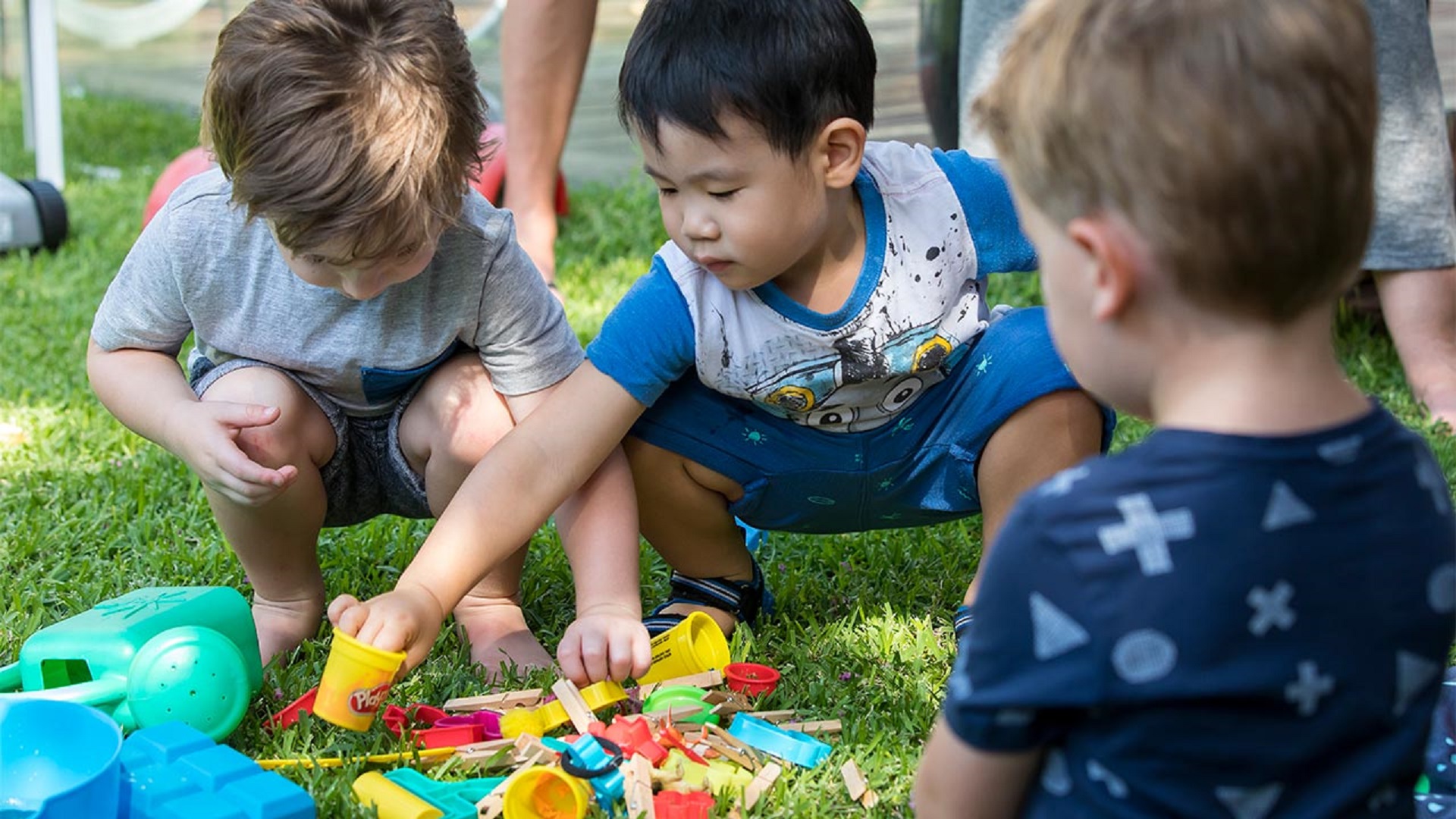
Balancing opportunities for dependent and cooperative play within an educational setting allows children to grow confidently as individuals while understanding the importance and pleasure of cooperation.
Language and Role-Playing
Language development flourishes in environments where children learn through play and interaction. Imaginative props such as puppets, dress-up costumes, and themed play sets invite children to engage in dialogue and storytelling, serving as tools for self-expression and understanding the power of language. As children narrate their adventures or negotiate roles in their make-believe worlds, they practice vocabulary, sentence structure, and the art of conversation.
Spaces specifically designed for group interaction further enhance children’s learning of language. These areas could be stages for performances, circle time mats for group discussions, or even a mock marketplace where children barter and negotiate with play money and goods. Collaborating and navigating social interactions in these settings deepen their comprehension and language use in various contexts.
Moreover, playing in these dynamic spaces is a cornerstone of children’s learning. It allows them to experiment with different social roles, learn problem-solving techniques, and develop empathy. By simulating real-life situations, children learn to articulate their thoughts and feelings, understand the perspectives of others, and practice the give-and-take of conversation.
Incorporating role-playing into early education curriculums is critical as children learn language mechanics and social and emotional nuances. Through play, they discover the joy of expressing themselves and the fundamentals of effective communication.
Prosocial Behaviours and Empathy
Prosocial behaviours and empathy are essential social skills that contribute to a well-rounded individual. Settings that model and teach these skills are crucial in early education as they form the foundation for children to interact positively with others. Classrooms and play areas that encourage sharing, helping, and cooperation naturally promote these behaviours. For instance, a community garden project can teach children the value of teamwork and the joy of collective efforts.
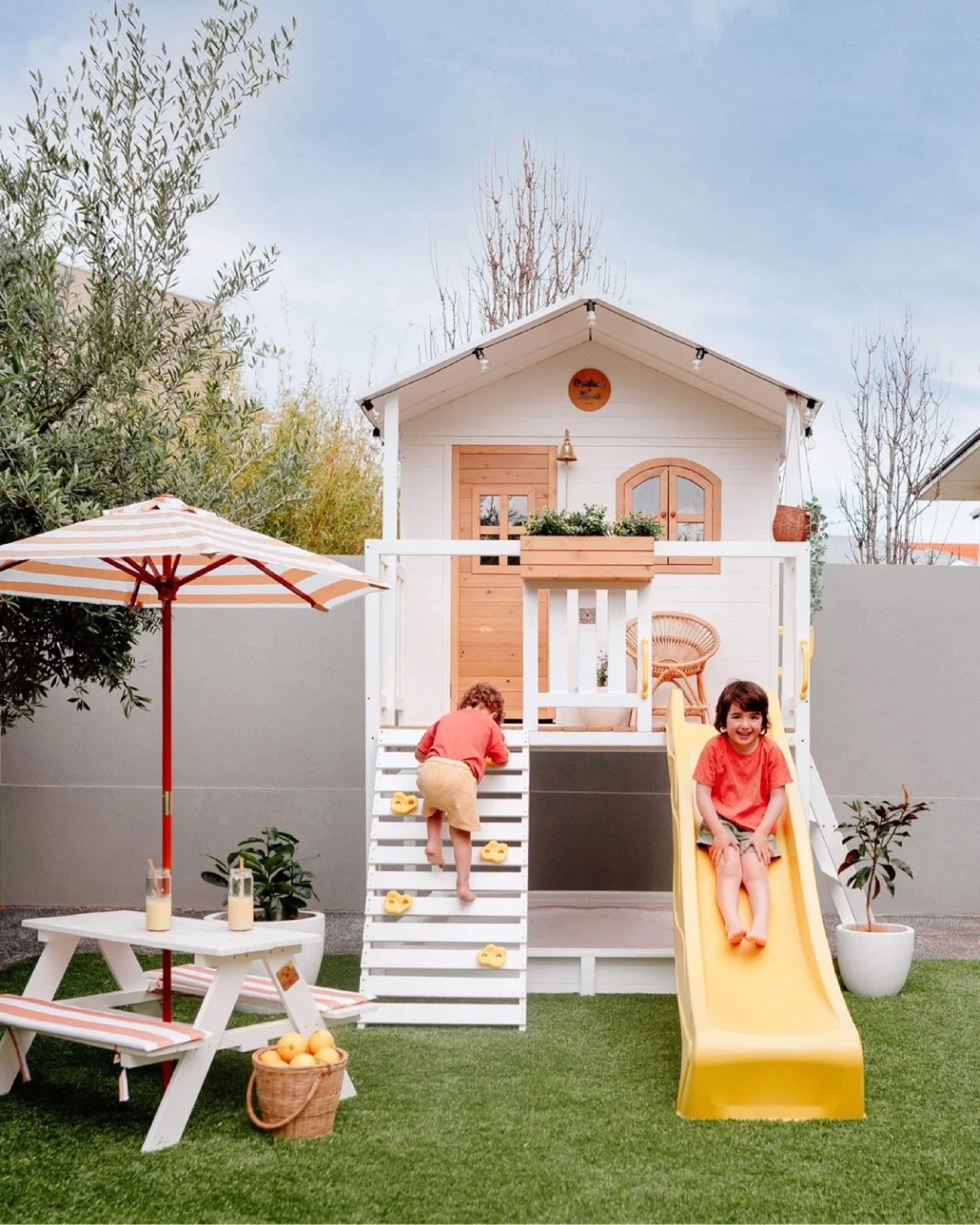
Moreover, role-playing activities that simulate real-life social situations allow children to practice empathy. Pretend play that involves caring for dolls or pets and managing a ‘hospital’ for injured toys can help children understand and respond to the feelings of others. Teachers and caregivers can also facilitate this learning by discussing emotions and reactions during storytime or after conflicts arise, guiding children to consider the perspectives and feelings of their peers.
Ongoing Outdoor Enrichment
Adapting to the Seasons
Adapting educational activities to changing seasons enriches the learning experience by connecting children with the rhythms of nature. Rotating activities and themes in seasonal changes keeps the curriculum fresh and engaging. For example, spring can be welcomed with planting activities, while autumn may focus on leaf collection and identification.
Incorporating weather-specific learning opportunities allows children to observe and understand the environment’s influence on their lives. In winter, activities might include studying snowflake patterns or tracking the temperature, whereas summer could involve lessons on solar energy and the importance of hydration and sun safety. This seasonal approach to education reflects the natural world’s diversity and teaches adaptability and appreciation for the unique qualities of each time of year.
 Evolving with Children’s Interests
Evolving with Children’s Interests
An educational environment that evolves with children’s interests is vital for maintaining engagement and promoting sustained learning. Regularly updating the learning space to match children’s developmental stages ensures the environment remains challenging and exciting. For instance, as children grow, a reading corner that once held picture books can transition to include simple chapter books.
Introducing new challenges and learning experiences is equally important for keeping young minds curious and active. This can involve setting up a science centre, magnifying glasses and natural specimens for budding explorers or offering math puzzles that encourage logical thinking for those showing an aptitude for numbers. Educators can tailor the learning environment to stimulate and satisfy the growing mind’s thirst for knowledge by paying close attention to the interests and abilities that emerge as children develop.
Opening Young Minds to Nature’s Possibilities
Outdoor play is not just recreation for children; it is a fundamental aspect of their early development. Engaging with the natural world helps to fine-tune motor skills, encourages creativity, and instils a sense of wonder. Within this unstructured form of play, children learn to negotiate risks, develop problem-solving skills, and build resilience. The rich sensory experiences of the outdoors offer unparalleled, laying a solid foundation for lifelong learning and environmental stewardship.
Aaron’s Outdoors recognizes the irreplaceable value of nature in shaping young minds and bodies. Our dedication to enriching children’s outdoor experiences is reflected in our diverse equipment and educational materials designed to inspire, challenge, and delight. From sensory gardens to adventure playgrounds, our commitment is to open every child’s mind to nature’s infinite possibilities. Embark on a journey to enrich your children’s educational landscape with Aaron’s Outdoors.
We are ready to assist you in designing and implementing a bespoke outdoor learning environment. Reach out to us via email, schedule an appointment, or give us a call — let’s start planning today. Our team is dedicated to crafting a tailored outdoor experience to captivate and educate young learners. Don’t miss the opportunity to transform your space into a world of discovery and adventure. Contact Aaron’s Outdoors now and take the first step towards an inspiring educational journey for your children.
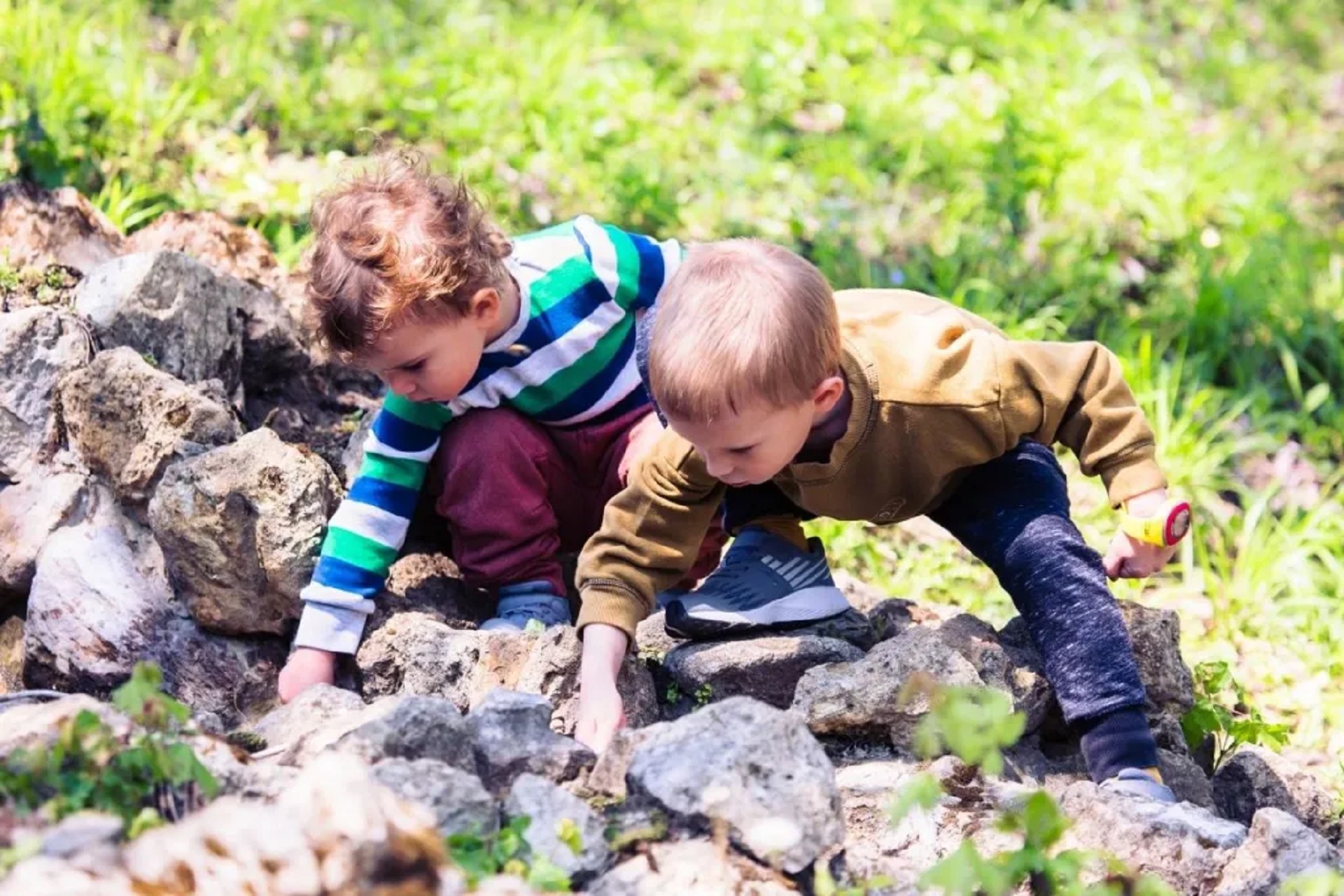 Evolving with Children’s Interests
Evolving with Children’s Interests




